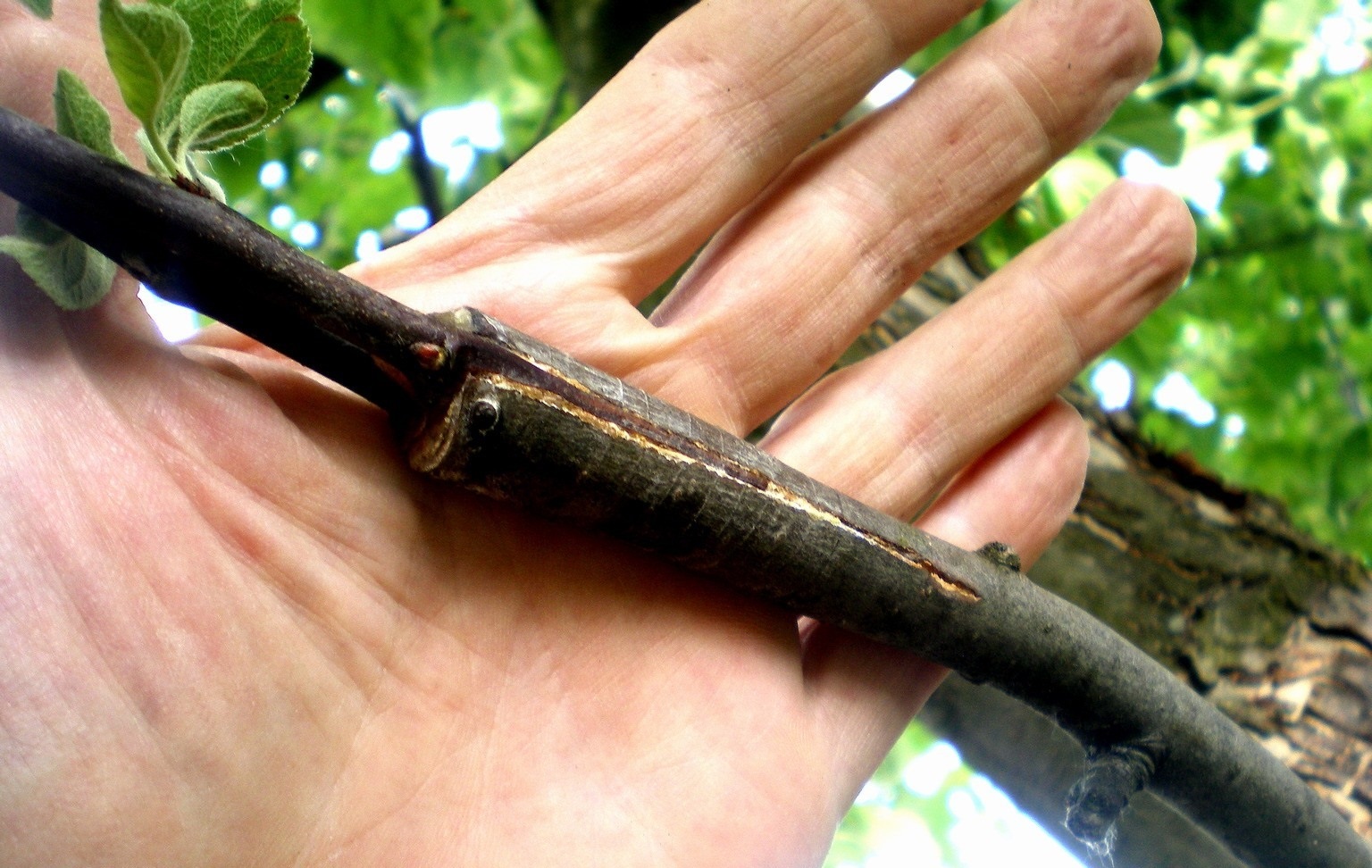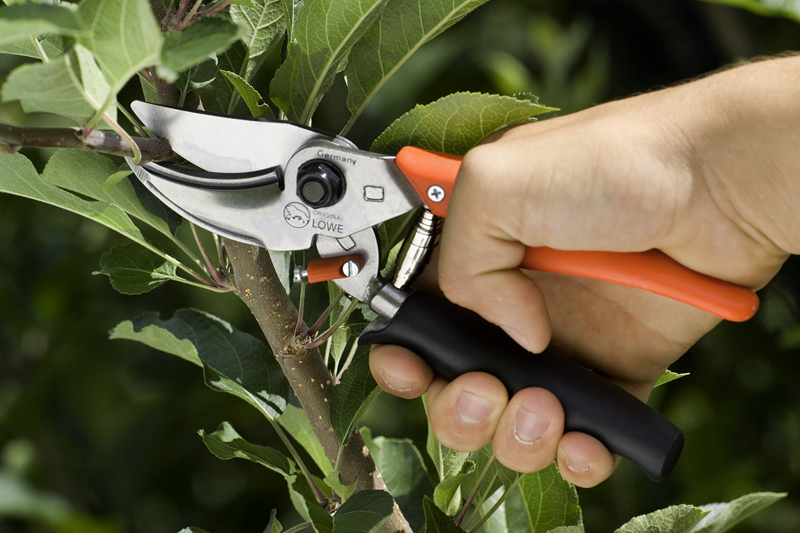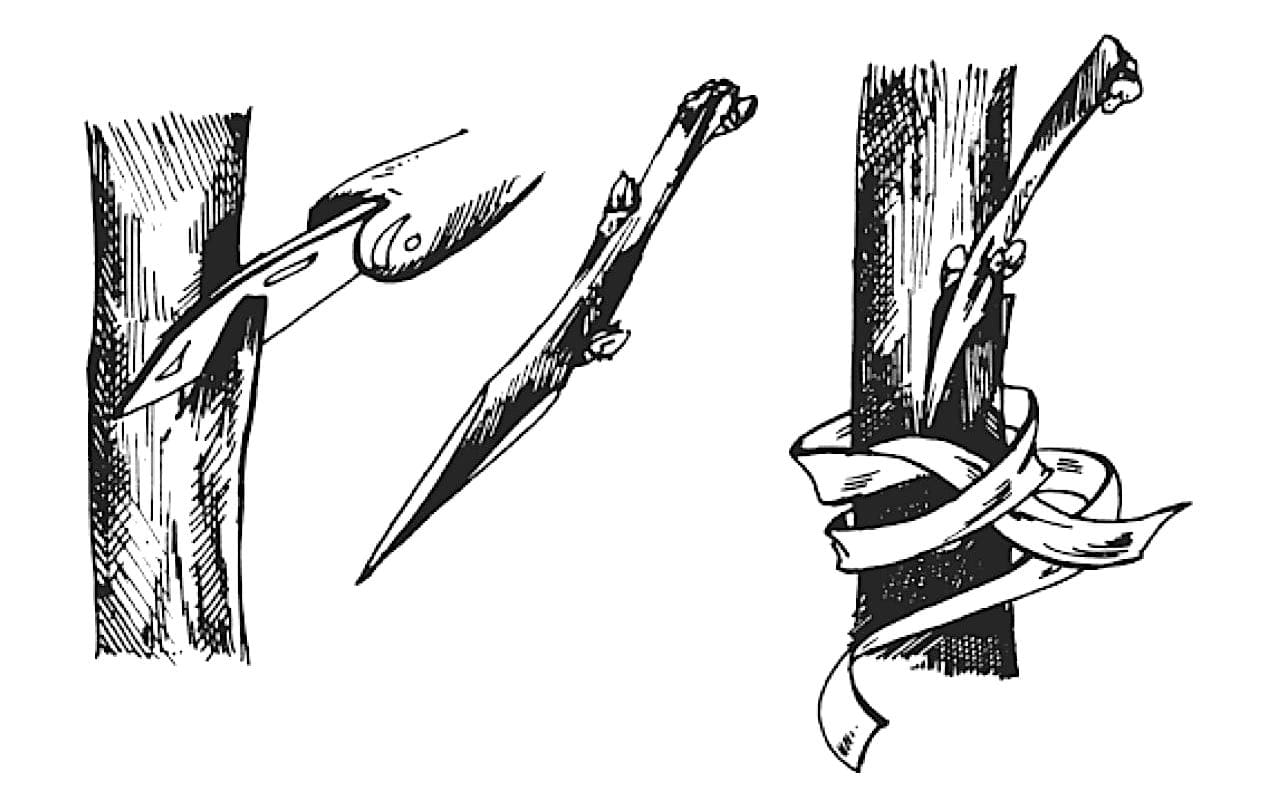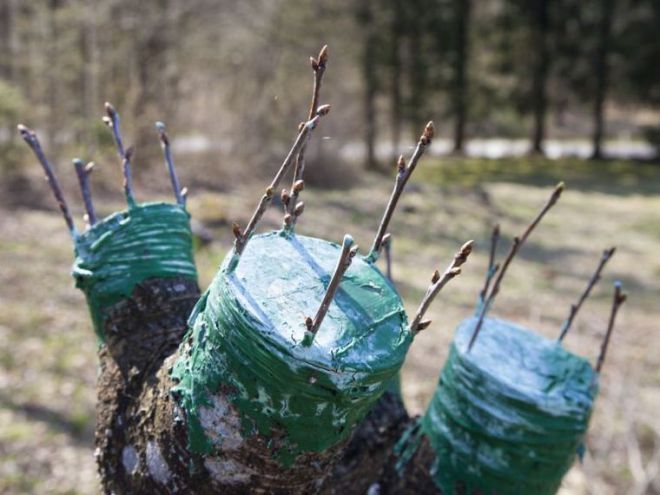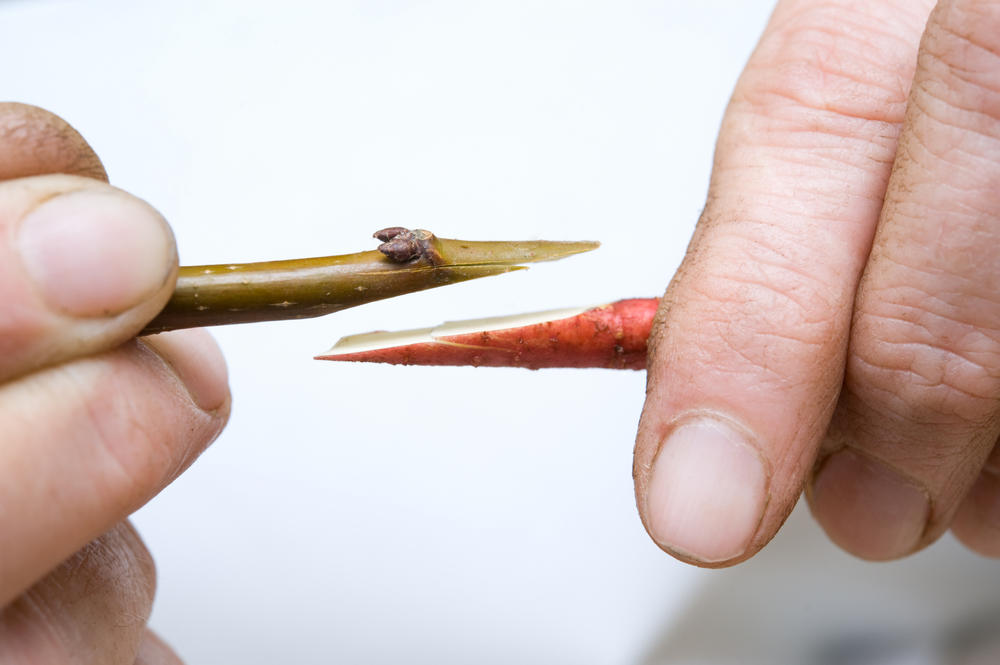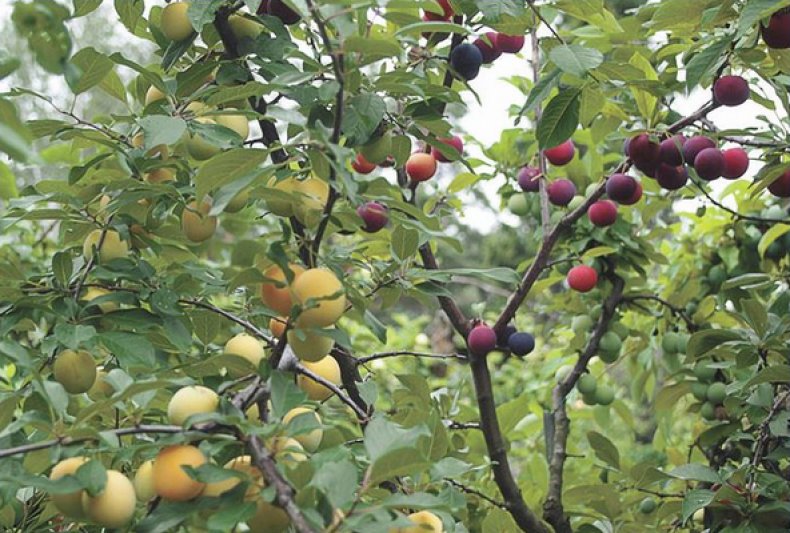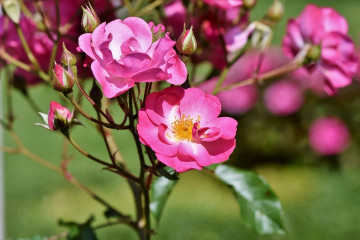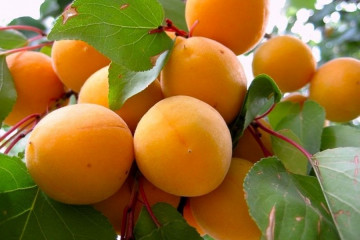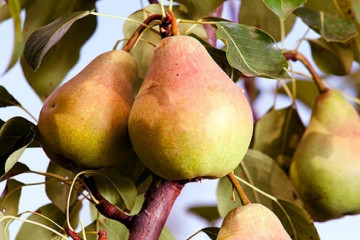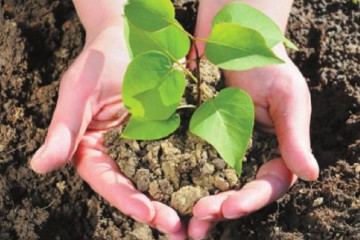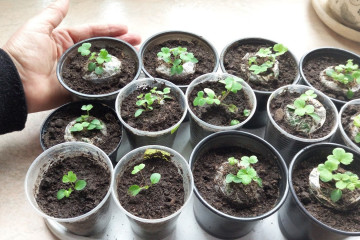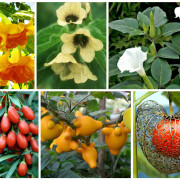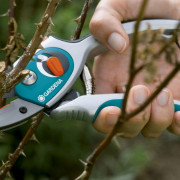How to plant plums on plums in summer with fresh cuttings
Content:
Plum is one of the most popular garden trees. It is not always possible to collect a high-quality generous harvest from it. To improve the taste of fruits, increase their number and frost resistance of the tree, it is grafted. Plum grafting on plum is a fast and high-quality way to propagate horticultural crops.
Reasons to plant a plum
The increased yield is not the only advantage of grafted plum:
- The procedure helps to save space on the site, allowing you to grow several varieties of fruits on one tree.
- Wildlife on the site can be grafted with a cultivar and the plum will bear fruit very actively.
- A dwarf fruiting plum is obtained only by grafting.
- The yield not only increases in quantity, but also ripens faster
- Grafting is not only a method for healthy trees, it is also a way to heal the bark.
- "Revitalization" of an old tree. A grafted old plant will bear fruit like a biennial.
- The appearance of southern fruits in northern regions is also possible only through grafting.
What can you plant a plum on?
Plum can be planted not only on plums. Apricot, cherry, cherry plum are suitable as a scion. Apple trees are not recommended to use, because they belong to a different family. Grafting cherries to plums is a very laborious process. The survival rate of trees is low, so the gardener will have to face difficulties. Planting plums on plums is much easier and faster.
It is best to perform the procedure in the spring due to the increased movement of fresh juice along the branches. It helps to heal mechanically inflicted wounds. Plum grafting in summer, especially in the first few months, is also often successful. In August, the procedure is possible, but it is better to use several grafts for a guaranteed result. Winter grafting is suitable for annual seedlings. When choosing a stock, it is best to choose a healthy, strong tree with a well-developed root system. Attention should be paid to the following aspects:
- Hardiness and drought tolerance.
- Scion compatibility.
- Strong immunity.
- The optimal age is 1-3 years, but definitely not older than 10 years.
The graft is most often responsible for the taste of the fruit. It is always located on the north side, away from the adverse effects of the sun. In the absence of such an opportunity, the appendix is artificially shaded.
Necessary equipment
For vaccination, you will need tools that every gardener has in the arsenal:
- secateurs;
- strapping material;
- garden knife;
- garden putty;
- saw-hacksaw in some cases.
There are versatile multifunctional grafting tools available at gardening stores. Not all types of secateurs are suitable for the procedure:
- Bypass. Such a pruner is distinguished by a working blade offset to the cutting line. This is one of the most gentle and neat types of tools.
- With an anvil. It is used to prune old dry branches, which can be useful during the grafting process.
- The ratchet pruner is universal. It is suitable for both young and old plants, does not require much physical strength.
A garden knife is used to prepare cuttings for grafting. Its straight blade only sharpens on one side. All movements with a garden knife must be performed towards yourself, and not against. This will make the incisions more accurate and minimize the chance of injury.
Basic vaccination methods
Vaccination can be done in several ways.
By the bridge
Bridge grafting is effective when the bark of a tree is gnawed by hares, burned, or frostbitten. For smaller damage, a simpler method can be dispensed with.
For a young tree you need 2 cuttings, for an adult - about 8. The best period for holding is May:
- First, you need to clean the graft site by trimming the edges of the bark with a disinfected knife.
- At both ends of the scion, you need to make cuts of 3 cm. Cuttings without buds need to be warmed to room temperature.
- Make T-shaped incisions in the bark vertically on both sides of the graft site. The handle must be inserted beyond the edge of the cuts, be sure to arcuate. Being upside down will only aggravate the scion disease.
- Any suitable material is used as a strapping: twine, electrical tape, medical plaster.
- During the summer, you should cleanse the graft from overgrowth and cut off a third of the crown of the tree to save juice and moisture.
The result of the vaccination can be assessed within two to three weeks - the stock will become thicker and healthier.
Side cut
Lateral cleft grafting is one of the easiest and most painless methods. This is the classic way. They can replace budding of plums in summer or copulation. The method is used on rootstocks of any thickness, however, the best accretion is provided by a branch up to 3 cm in diameter. The most optimal time is early spring:
- On the lower part of the scion with two or three healthy buds, an oblique incision is made three times the diameter of the cutting. The same incision is made on the reverse side. The top of the cutting is cut one centimeter above the location of the upper bud. The graft is ready to be vaccinated.
- On what the plum (rootstock) is grafted onto, you need to make an incision on the side, corresponding to the incision on the handle, placing the knife at an angle of 30 degrees so that the blade hits both the bark and the wood. If the diameter of the branch is large, it is better to plant twice at once from opposite sides.
- Combine the rootstock with the scion. The stalk must be inserted into the cut so as to ensure a tight connection of all layers of bare wood. The vaccination site is tied with a suitable material. The top of the cutting is processed with garden pitch.
The result can be assessed in two weeks. If the buds on the scion come to life, then everything went well.
Budding
Budding is a kidney inoculation. The most favorable period for her is late July or early spring. Annual seedlings or rooted cuttings are used as a stock. The advantage of the method is in saving grafting material: just one peephole forms a whole stock. Also, the procedure is quite quick and simple, which makes budding popular among gardeners:
- A T-shaped cut should be made on the rootstock, which does not injure the wood. Its task is to make room in the bark for the cutting.
- A peephole with a neatly cut piece of bark is inserted into the incision pocket. Any excess sticking out of the rootstock bark must be removed.
- It is best to secure it with grafting tape, which then needs to be treated with garden putty.
Plum on plum under the bark
The method is rarely practiced, but it always takes root well on pome trees. Plum can be grafted under the bark, but it will require proper care and attention:
- To prepare the cutting, it is necessary to make an oblique incision of 3 cm, leaving 2-3 living eyes.
- On the upper part of the branch on which the procedure is planned, the bark is cut in half with a knife to hard wood. Two parts are pulled apart. A young shoot is carefully introduced into them.
- The site of the operation is tightened, and open wounds are treated with var. You need to try not to bring it inside the vaccine. This can slow down or stop the process.
Copulation
Most often, gardeners are dealing with thin rootstocks. Copulation is the ideal grafting method for young plants. The game can be graded easily with this method.
The biggest plus of the method is simplicity, even a beginner will master the technique. Copulation is carried out until the end of June:
- It will take a little time to prepare the stock. A smooth, peeled branch should be cut at a 30-degree angle.
- A graft with 2-4 buds is cut in the same way from the end. After that, an even incision is made over the upper kidney, stepping back a couple of millimeters.
- The stalk with the branch must be aligned so that an even branch with a matching cambium is obtained, so you need to monitor the sharpness of the instruments.
- The wrapping is made of plastic cling film 10 cm wide with an overlap. You need to keep track of the location of the branches. If a displacement occurs, then the grafting will have to be redone, otherwise the species will not grow together.
- The upper cut is lubricated with garden pitch.
Ablactation
Ablating is popular in mold gardening. It is rarely used for flavoring fruit or treating a tree, but it is still a good method of grafting plums. Ablating can be done from May to September. It differs in simplicity among all other methods:
- The bark must be removed from the scion and rootstock. Old wood also needs to be cut.
- It is necessary to make cuts of equal length and fold the branches with them to each other. The cambial layers will match if you use well-sharpened garden tools.
- The vaccination site must be tightened with twine and treated with garden pitch, being careful not to bring it inside open wounds.
- The branch of the mother tree next to the graft can be tied with wire for easier detachment in the future.
The new branch will take root after 2-3 months.
Vaccination care
Plum is a rather unpretentious plant. After the procedure, it requires a little attention. If the vaccination was successful (the kidneys look healthy, the process swells, a growth has appeared at the junction), then from July the bandage begins to weaken. It is stretched so that it does not squeeze the bark. When the first leaves appear on the handle, the plastic cling film or bag is removed.
With a strong increase in callus - a kind of suture at the junction of the branches, the bandage can be removed the next month, but this usually happens in the spring of next year.
If the scion had several buds, and they all took root, the extra ones must be removed, otherwise in the future they will weaken the main tree. You can start forming the crown almost immediately, pinching the tops in the summer. In case of failure, the vaccination site will not die, it can be used next year.
Frequent mistakes
Vaccination requires not only knowledge of theory, but also practice. In order not to face failure right away, you need to know the common shortcomings of novice gardeners:
- Slow work. The whole procedure should take no more than half a minute. The sap of the tree quickly dries up and oxidizes, becomes sticky and unsuitable for connection.
- Substandard or blunt instruments. An important point in the growth of plants is the perfectly matched cambium. This can only be achieved with a sharp garden knife. All splinters and irregularities reduce the chances of success.
- Slices too small.The smaller the contact area of the wood, the slower the tissue joining takes place. The cut must be at least 3 cm.
- Dried or moldy scions. Cuttings must be prepared in advance - in the fall or early spring, before the buds bloom.
- Weak dressing. The vaccination site should be tightly tied, the first indulgences can be done only after the new process has engrafted.
- Shank too deep and tight. It is fraught with decay and death. The upper part of the bevel cut should be a couple of millimeters free.
Vaccination is a skill that every gardener should have. It is very useful because it saves space in the garden, as well as time and money for maintenance. Many interesting tastes and types have appeared thanks to vaccination, and it is not so difficult to learn how to do it.
